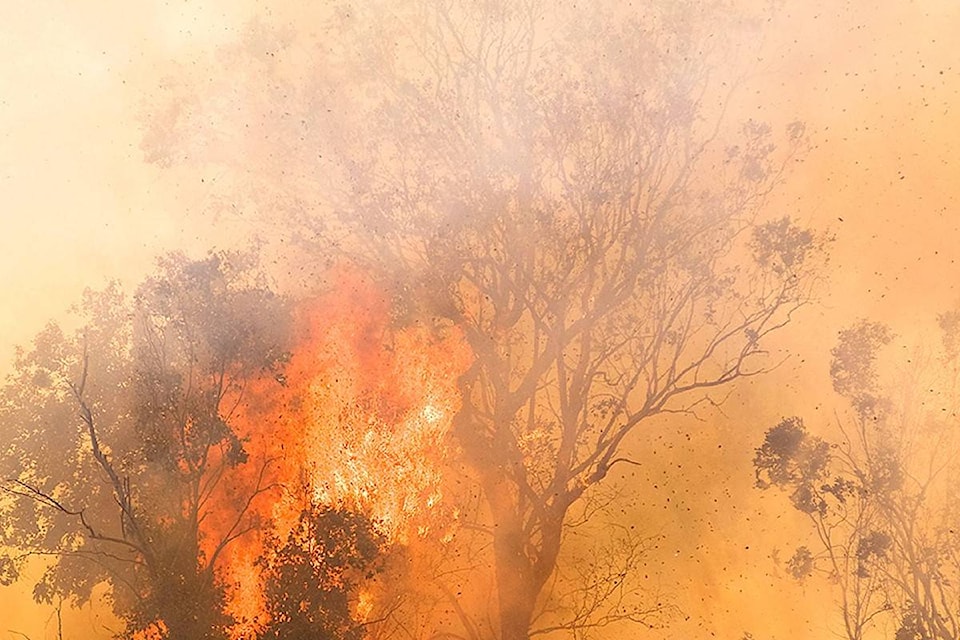Editor’s note: This column is a continuation of Hilton’s column from last week where he explored the book, The Chinchaga Firestorm by Cordy Tymstra. The book is about the Chinchaga wildfire, also known as the Wisp fire and “Fire 19” which burned in Northern B.C. and Alberta in the summer and early fall of 1950.
Author Cordy Tymstra provided some interesting information on forest fires like the centimetre-long black beetle that uses special infrared radiation receptors to detect wildfires from as far away as 80 kilometres.
Once the beetles reach the fires there is beetle utopia, for example no predators and lots of beetles for mating with. Females lay eggs in the burned trees which provide little resistance for the developing larvae. These remarkable insects are able to detect fires with far greater accuracy than anything that man has been able to achieve so far. This enterprising insect is one of many other plants and animals that benefits from the temporary disruption in the forest ecosystem caused by the wildfire.
One interesting result of the fire was the “Great Smoke Pall ” which for many occurred on September 25, 1950 with the smoke in the upper atmosphere extended from the fire in Alberta as far as the eastern seaside near New York. Livestock reacted as if it were nightfall, cars had to use headlights, ball games had to turn on lights and speculation as to causes ranged from a Russian attack, secret US military activities, atomic explosions and end of the earth speculation. Only when the smoke cleared did the explanation of Canadian wildfires become accepted as the logical explanation for most but many were still doubtful.
Read More: FOREST INK: History of 1950 Chinchaga firestorm
The author also did considerable research to describe how dark days had appeared in the past with a long list of 18 events taking place from 1706 to 1910. Most events were thought to have been caused by forest fires or volcanic eruptions.
Not to be outdone the Russians with their equally expansive northern boreal forest boast the largest fire in the world with four million hectares burned in 1915 and seven million hectares burned in China and Siberia in 1987. The smoke from these fires remained more localized but it was reported that large migrations of animals such as bears and moose occurred because of the large size of the fires.
In a chapter entitled “Policy Changes” the author describes the events leading up to the 1950 fire and the years that followed. There was a concern about the number of human caused fires including homestead clearing, smudge fires from trappers and pilots tossing out burning cigarettes and cigars from airplanes flying along specific flight lines (this practice ended with the development of pressurized cabins). Alberta embarked on a public education program after hearing how successful the Swedes had been in this area. More serious firefighting took place after 1960 once a forest inventory along with forest cover maps were published in 1957. The government now realized that there were some valuable forests being burned.
The author closed with some of the following conclusions: The lessons learned from large wildfires is to not stop all fires at all times. Since agencies become challenged during worst case fire events the sharing of resources across Canada will become increasingly important.
The new vision for fire managers in Canada now calls for today’s leaders to learn from the 1950 Chinchaga firestorm and lead wild fire management into the future where people, fire, and forests coexist and fire science and technology help light the path forward.
Jim Hilton is a professional agrologist and forester who has lived and worked in the Cariboo Chilcotin for the past 40 years. Now retired, Hilton still volunteers his skills with local community forests organizations.
Do you have a comment about this story? email:
editor@wltribune.com
Like us on Facebook and follow us on Twitter.
